Starting a vegetable garden from scratch can be overwhelming, but it doesn’t have to be. A successful vegetable garden begins with proper planning. Let this guide assist you in creating an edible garden that keeps you in budget, requires no prior skillset, and has you starting a vegetable garden from scratch right in your backyard like a pro.
This article last updated on April 4, 2022.
This post may contain affiliate links at no additional cost to you. By making your purchases through the links on this website, IMSL may make a small percentage at no direct cost to you. IMSL only promotes products we use & truly believe in. Please refer to my Privacy & Disclosures for further information. IMSL thanks you for your support!
Thinking of starting a vegetable garden? I don’t blame you! After all, having your own edibles growing right in your own backyard is rewarding, economical, reassuring, and did I mention, delicious?
If this sounds like you, then you are in the right place! Let this guide lead you to growing your own healthy food right in your own backyard vegetable garden (or porch, or windowsill) with all the tips and suggestions you need! Read on for all the tips and suggestions for starting a vegetable garden from scratch!
When first beginning your own vegetable garden there are a few pointers I’ve learned over the years that I would like to share. Think of them as a list of “what I wish I had done” when first creating our veggie beds 😊
First, however, if you are on the fence, lol, about whether you want to grow your own edibles, have had a few garden failures, or are a bit intimidated about creating your own garden space, then let’s take a look at the positives.
BENEFITS OF STARTING A VEGETABLE GARDEN FROM SCRATCH
I could go on and on about the many benefits of gardening in general. However, starting a vegetable garden from scratch brings with a bit more satisfaction. After all, you can eat the fruits of your hard labor 😅
But in lieu of simplifying, here are my top gardening benefits many which are listed in my article, “How To Grow What You Eat”.
- ENJOYMENT – Strolling through the garden, often with barefeet firmly planted in the soil, assessing what’s growing, may be one of life’s best simple pleasures! I cannot think of a soul who has said they don’t enjoy nature in all it’s glory!
- HEALTH – Not only for the health benefits of the food you will enjoy, but also for the health benefits of your body. Gardening is good exercise! For the body, the mind, and the spirit.
“The act of creating one of life’s most sustaining elements, food, encourages more than just planting a seed. Growing what you eat encourages a healthy body, mind, and spirit.”
IMSL
- REWARDING – Nothing may be more rewarding than when you sit down to a table and eat the food that you have grown, nurtured, harvested, and prepared.
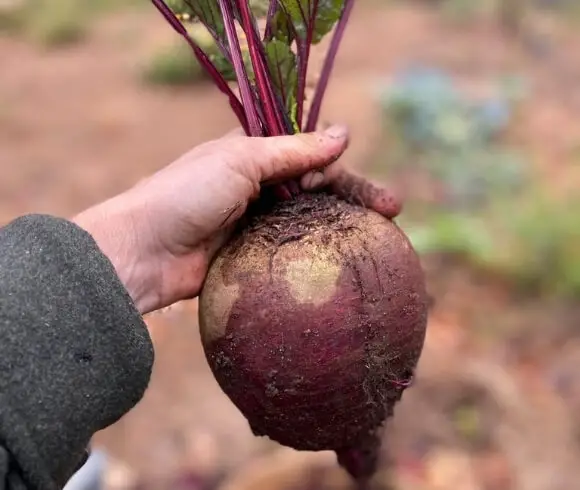
STARTING A VEGETABLE GARDEN FOR BEGINNERS
If you are new to the world of growing your own vegetables, there are a few suggestions I would make to help you along the way.
For those just beginning, I always recommend determing your “Garden Style or Method” first. If you are unsure of what that means, take a peek at the article. Once you’ve decided your garden approach, let the real planning begin.
Planning is key. By following these simple “S’s” you will be taking a bite out of your favorite fresh veggie in no time. What are the “S’s”? Small, Sunny, and Selections. You can add a “w” in there as well, water 😉
START WITH A SMALL VEGETABLE GARDEN FIRST
Don’t be like me. Our first garden was almost the size that I’m presently putting in every year, about 2000 square feet. When first starting out, it can be a frustrating process until the basics are learned. Not to mention a costly one. So starting small is a wise decision.
Approximately a 6 x 6 foot gardening space is a great size for beginners. Fill that space with a few favorite vegetables of choice that are appropriate for your area. This space will easily offer fresh eating all summer long and will be simple to keep up with.
Starting a vegetable garden from scratch especially for beginners can be even more simplified by growing your vegetables in containers. Those with limited budget (less soil and inputs needed), limited on space (you can easily grow on your balcony or patio), and limited on time (quick and easy to get going with growing) are all great options for anyone looking to get started.
It’s tempting to put in every vegetable under the sun. After all, those gardening catalogs make it look simple and tasty! I encourage you to keep it simple though. choose only the varieties of what you eat, keeping with what you enjoy eating.
Unless you want enough zucchini to feed an army, or have tomatillo’s coming out the ears & then finding out you truly don’t enjoy tomatillo’s, think small at first.
It takes several years of growing a vegetable garden to determine how to grow what you eat. To know exactly how much of each plant you will need to plant for each family member. To know & determine the varieties that are favored by all.
Warning! You may find you’ve created a new summer hobby with an edible bounty as a reward 😉
LOCATION CONSIDERATIONS FOR THE VEGETABLE GARDEN
When first choosing exactly where you will be growing your vegetables, location is everything. Sun, soil, water and wind can all make or break your gardening endeavors.
Consider placing the potential gardening beds close to the house and area you keep the gardening supplies and tools as well as a watering source.
When you are in the midst of making a meal and need a tomato, treking a mile away from the kitchen is not something you will relish. Convenience is well, convenient. If you have to plant a bit away from the house, you can always consider planting a small “kitchen garden” in containers or bed with the items you use the most in addition to the main vegetable garden.
VEGETABLE WATER NEEDS
Consider where you can access water easily. During the first weeks of transplanting or putting your garden in, the beds need to be watered frequently. Once the plants have become more established and especially in warm, dry conditions, water every few days deeply. Your plants will do well with a deep drink every couple of days than with a brief sprinkle every day.
Still unsure of when it’s appropriate to water? Push you finger 3-4 inches down into the soil. Is it dry? Then it needs a good watering. Having easy, convenient access to a water source is invaluable.
As the plants roots systems begin to flourish and grow, they will benefit from a deep watering to encourage an even more healthy root system, rather than a sprinkling only.
For those with water conservation in mind, consider investing in a good soaker hose system right from the start that can be placed on a timer. Not only does this system conserve water usage, it also gives the plants the water they need at ground level, reducing disease promotion from splash-up, but also saves lots of time having to manually water.
VEGETABLE WIND CONSIDERATIONS
Wind can be a vegetable garden foe. Choose a plot or spot that is not overly affected by winds.
VEGETABLE SUNLIGHT REQUIREMENTS
Most vegetables grow best in full sun (receiving at minimum 6 hrs but as much as 8-10 hrs per day). As almost all vegetable varieties are considered annuals and have only a short amount of time to grow as quickly as possible & produce their fruit, a full sun location is desired.
Think of sun as part of the vegetables food. The nourishment they need to prolifically produce and shine.
By stepping into the space you will be adding the garden bed 3 to 4 times throughout a sunny day, you can then determine the length of sun time this bed will receive, noting any areas that may receive shade, and adjust the location if the required amount of sun is not received there.
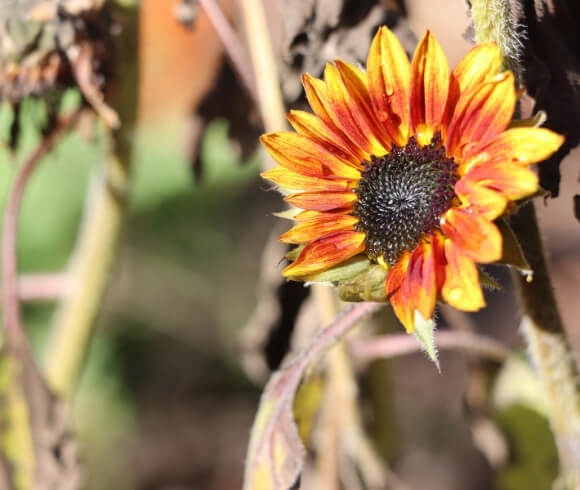
Plan on positioning the gardening space in such a way that the plants can be planted in a north to south orientation to take the fullest advantage of the sun and not shade any plants out.
You can always create any shade that may be needed for some leafy greens for instance, but you can never create more sun exposure without chopping tree’s or moving buildings, just sayin’ 😉
Once you have your location and size determined, go ahead and remove any sod or debris from the space and begin to assess and prepare the soil.
ASSESS SOIL CONDITIONS OF THE NEW VEGETABLE GARDEN
In addition to the sun exposure of your potential gardening bed, also consider the soil. Your plants will not only get the fuel (sun) they need but also the nutrition they need from proper soil conditions.
Should you choose a location that has poor draining soil, or areas where the water pools regularly, these soil conditions will translate into soggy, wet roots, which then translates into soggy dead plants.
The soil should be well draining but also be able to maintain moisture fairly well. It should be rich and easily dug into. The soil should be dark, crumbly, but hold together easily when moist.
An easy way to assess or test your type of soil is by choosing an area within your designated gardening space, soaking that area with water and wait a day. Dig a small portion of the soaked area up and squeeze firmly in your hand. The perfect soil texture should remain together, yet when pushed gently should crumble apart. Anything other than this can usually be rectified by adding organic matter or compost.
By assessing your soils textures, you can easily determine what you may need to add or improve upon. In addition to the water test noted above, dig up a bit and feel it. Does it feel sticky or dense? You may be dealing with too much clay in the soil. By adding organic compost you will provide oxygen and moisture to the roots of your plants. Is your soil rocky? Remove the rocks as you turn the soil to aerate and plant. Does your soil feel gritty? It may have too much sand. You get the idea. The texture of the soil tells alot.
When in doubt about your soils condition, I recommend getting it tested. Your local, state extension, typically can run this inexpensive soil test for you. By testing your soil, you will then be able to determine any amendments your soil may need to provide ultimate growing conditions for your veggies.
The good news? All soil can be improved no matter what conditions you are faced with. Typically, most issues can be solved with the addition of organic compost or amendments.
Note: When adding any compost or amendments, turn them under, water, and let the soil rest for a few days prior to planting.
Now that your soil is prepped, I highly recommend a deep layer of mulch be layed down now. Yes, you heard correctly. Now, before you plant. You can never get ahead of the weeds to quickly in my humble opinion. Mulching not only suppresses weed growth, but also encourages moisture retention.
To mulch, choose an unsprayed, organic straw or hay, or our favorite as we live near the coast either seaweed or fresh salt marsh hay that has been sustainably harvested. Or better yet, both! Mulch can be easily pushed aside to allow for planting. Some even like to add newsprint in several layers or cardboard under the mulch. I just add a deep enough mulching layer that this step in un-necessary.
STARTING A VEGETABLE GARDEN FROM SCRATCH -GROW ONLY WHAT YOU EAT
When it comes to what to grow in your newly formed from scratch vegetable garden, familiarize yourself with what grows best in your area of the world. No use trying to grow pineapple when conditions and criteria of growing pineapple are not in your favor!
COLD WEATHER AND WARM WEATHER VEGETABLE CROPS
Understand the difference between cold weather crops and warm weather crops. Cold crops are those that will tolerate colder temperatures. Think lettuce, spinach, and root vegetables such as beets.
Warm weather crops are those that will tolerate warmer temperatures. Once the soil begins to warm, typically after the threat of the last frost date in your area, you can then plant warm weather varieties like tomatoes and peppers.
GROWING FROM SEED OR PURCHASED PLANTS
Determine whether you will be growing from seed (more economical) or purchasing plants. If you are new to vegetable gardening & are growing a small area, purchasing plants may be a viable option until you can decide to expand your garden area next year.
Start with your local extension once again to determine the best plant varieties to grow for you. Familiarize yourself with how to read & understand seed packets. The information contained there is invaluable.
A few vegetable varieties do best when directly seeded into the garden beds. Varieties like carrots, chards, greens, & beets.
I am a firm believer that all seed is not created equal. For a full, in-depth look at the differences of seed stock before you make an investment, take a look at “Vegetable & Herb Seeds – Know The Differences”.

If you are anything like me, come spring time I long to get dirt under my fingernails. Right from the get-go, don’t rush the process. Planting certain varieties too early can be disastrous. Even when you believe that planting a “few days earlier” than the recommended time will make no difference. Especially when you are enjoying an unseasonably warm spring day & are anxious to get your growing on!
The term “what a difference a day can make” holds true when it comes to planting time. Follow the packet directions. Find your “last date of frost” and plant no earlier than what’s recommended on the seed packet or plant purchased. Don’t know yours? Check here to find out.
Remember what we mentioned was the BEST thing you can do when gardening is? Planning. A bit of planning & scheduling out what can be planted when, can mean success or failure in your gardening attempts.
VEGETABLE SELECTION RECOMMENDATIONS
So what do I recommend you plant when first starting out? A few of our must-have vegetable varieties that we grow yearly are found below.
- TOMATOES – Probably our all time favorite. Period. So much so that I was featured in an AP article by John Raby which was picked up by some large media outlets! Of course, I may be forever known as the “crazy tomato lady” 🙂 If you’ve never grown tomatoes, be sure to review “Growing Tomatoes From Seed”, “Growing Tomatoes Do’s And Don’ts”, and “Seed Starting 101”
- PEPPERS – We grow both hot and sweet peppers and love them.
- GREEN BEANS – These prolific producers are amongst our favorites. Especially as they are so easy to blanch & freeze or can
- CARROTS – This directly seeded root vegetable is easy to grow and store with a few tips. Check out how I thin mine with no waste and watch how I harvest and store mine for fresh eating all winter below
- ZUCCHINI OR SUMMER SQUASH – For both fresh eating all summer, grilled sliced zucchini anyone?, and for freezing to use during the winter months
- BEETS – We love the greens & the root itself! Yum!! Easy & quick to grow, simple to store or can
- CHARD, LETTUCE, KALE, SPINACH – Greens for fresh eating all summer and some for freezing for winter use
- RADISH – We love a bit of crunch and spice! Radish may be one of the fastest vegetables to grow & use
- SUNFLOWERS – When creating your vegetable garden from scratch, don’t forget a few flowers and plants that attract bees and pollinators! Sunflowers are not only beneficial, beautiful to look at, make gorgeous cut flower arrangements, but are edible as well! I’ve yet to try this recipe from my friend Chris over at Joybilee Farm, but it is on my radar! So if your space allows, plant some pollinator attracting herbs and flowers.
PRO TIP: When space is limited, consider utilizing the vertical space available by growing up by trellising the plants. This method is especially good for vining crops such as pole beans, peas and the like.
MAYBE OF INTEREST
These are just a few suggestions for what you can grow. Again, base what you choose on what you and your family enjoys eating. Why plant broccoli when no one likes broccoli?
Another consideration when making your selections is the difficulty level of growing certain vegetables. For instance, I choose not to grow broccoli, not because I don’t love it, but because it tends to be a fussy plant to grow, takes up a huge amount of garden space with little return.
By doing a little research on your plant choices, you can easily determine if they are easy growers or high maintenance ones.
PLANTING THE NEW VEGETABLE GARDEN
Planting a full vegetable garden, one that will hold a multitude of different plants, takes just a bit of planning in when and where they will be placed in the garden at the start.
VEGETABLE PLACEMENT IN THE GARDEN
Plant tall growing varieties like pole beans on the north side of the garden to prevent shading out shorter plants.
Should you still get some shading, think about planting those cool weather varieties, the ones like lettuce, that don’t appreciate full, hot sun during the height of the growing season, in the shaded areas created by taller plants.
VEGETABLE GARDEN SUCCESSION CROPS & PLANTING
Think about succession planting. What the heck is succession planting? I
It’s basically staggering the times that you plant one variety. For instance, say you want lettuce. Lettuce grows fairly quickly and will bolt and become bitter fairly quickly as well. By planting just a bit one week, and then planting a bit more the next week or even the week after, you can be assured of a continual supply of lettuce that remains young, tender, and sweet.
A few other vegetables that do very well as succession crops are:
EARLY SPRING
- Lettuce
- Arugula
- Peas
- Radish
- Carrots
- Broccoli
WARMER WEATHER
- Tomatoes
- Eggplant
- Peppers
- Herbs
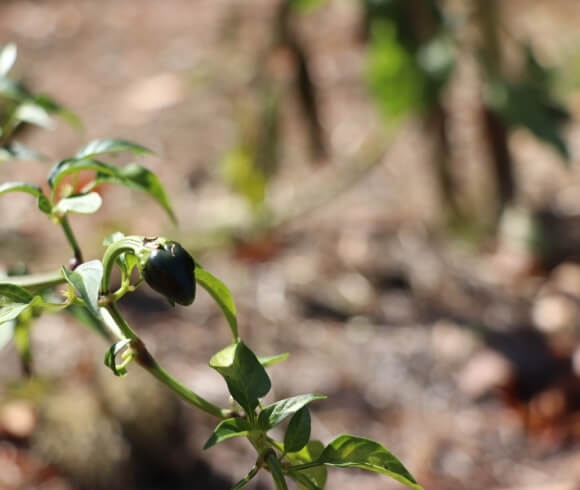
VEGETABLE PERENNIAL PLANT OPTIONS
Consider whether you will be adding perennial plants. Plants that grow year after year. Not only will they supply FREE food year-to-year, they also add visual interest to the garden year round.
Think asparagus, some herbs, and rhubarb. If you will be adding these plants, determine the plants needs and consider where they will find permanent residence.
CARING FOR THE NEW VEGETABLE GARDEN
Once you’ve planned the garden space, prepared the soil, mulched, and planted the vegetable garden, now the tending begins. For me, this is not such as difficult job, but instead one that brings with it the joy. The joy of watching new plants emerge and thrive under your care. You can find me early mornings with my first cup of coffee out in the garden, strolling to see what’s growing.
I cannot tell you how many have lamented about not having a great garden because they didn’t spend the needed time caring for it. After spending all the time in the preparation and planting stages, it seems wasteful to me to let it go.
With only a bit of time spent tending to it each day, your garden will grow strong and provide you with it’s bounty.
WEEDING THE VEGETABLE GARDEN
The number one contender of lost vegetable gardens? Weeds. Weeds will fight for nutrients, light, and water right alongside your veggie plants. And, although I hate to say it, they usually win if let go.
So stay ahead of the weeds by removing them! If you have followed this guide and placed a thick, 3-4 inch layer of the mulch of your choice, you are already ahead of the game. This mulch will reduce the amount of weeding necessary immensely!
Should you spot a weed, don’t delay! Pick it. Weeds will go to seed quickly if left and then let the pandemonium begin! Hoeing is effective in cutting those weeds out, which can be left to dry in the sun. They decompose quickly and provide some nutrients for the soil. I recommend hand weeding any that are growing near the base of the plants.
WATERING THE VEGETABLE GARDEN
We have already discussed the importance on watering, but it’s important. Stay on schedule. Assess your watering needs weekly as the weather changes. Be sure you are sufficiently watering deeply enough to keep to whatever schedule you determine is necessary.
One of my favorite systems to use is an inexpensive soaker hose system. This waters at the base of the plants slowly allowing the plant to receive the moisture more effectively. As it’s not watering from overhead like typical sprinkler systems, you also reduce many fungal diseases from occurring.
If you are still unsure if your garden is receiving sufficient water, there are gauges that can be used. As a beginner, you may want to invest in this gardening tool.
TRELLISING THE VEGETABLE GARDEN
Certain varieties, such as indeterminate tomatoes which continue to grow throughout the season and can reach a lofty height of 6 ft or more, need a support system.
Determine which varieties of vegetables you have chosen may require support and offer it. It doesn’t have to be fancy or cost alot. I typically use wooden 6 ft stakes which are relatively low in cost and can be re-used for many years to stake up my tomatoes. I have been known to use the stalk of my growing sunflowers as a stake to grow pole beans on.
Get creative, reuse and repurpose when you can. Often you will find that the more unique trellising systems, like old bicyle rims stacked upon one another as shown here, make for visual & artistic interest in the garden.
FERTILIZING THE VEGETABLE GARDEN
Every garden will benefit from a proper fertilizing schedule. If you were able to mulch using seaweed and or fresh salt marsh hay you are ahead of the game. There may be no better fertilizer than that which the sea provides.
If you are not fortunate enough to have access to either, think about purchasing a liquid kelp fertilizer. This foliage and root spray, or what I call brown water, is a miracle worker. When transplanting my seedlings into the garden, I literally will soak the entire seedling in brown water prior to planting to give it a boost.
Many find that relying on a good compost dosing each year just prior to planting works fine. I like to do both for maximum results.
PEST & ANIMAL CONTROL IN THE VEGETABLE GARDEN
As much as you enjoy eating fresh vegetables from the garden, unfortunately, so do both “pests” and animals. With a bit of consistency, both can be deterred from thriving in your garden.
Take deer for instance. They can jump. And jump tall buildings in a single bound. Well, maybe not that high, but they can jump over 6-7 feet high. So detering these beautiful beings would take a fence no shorter than 8 feet in my opinion. Unless you electrify it. That will keep them out, at least it does for our garden beds 😉
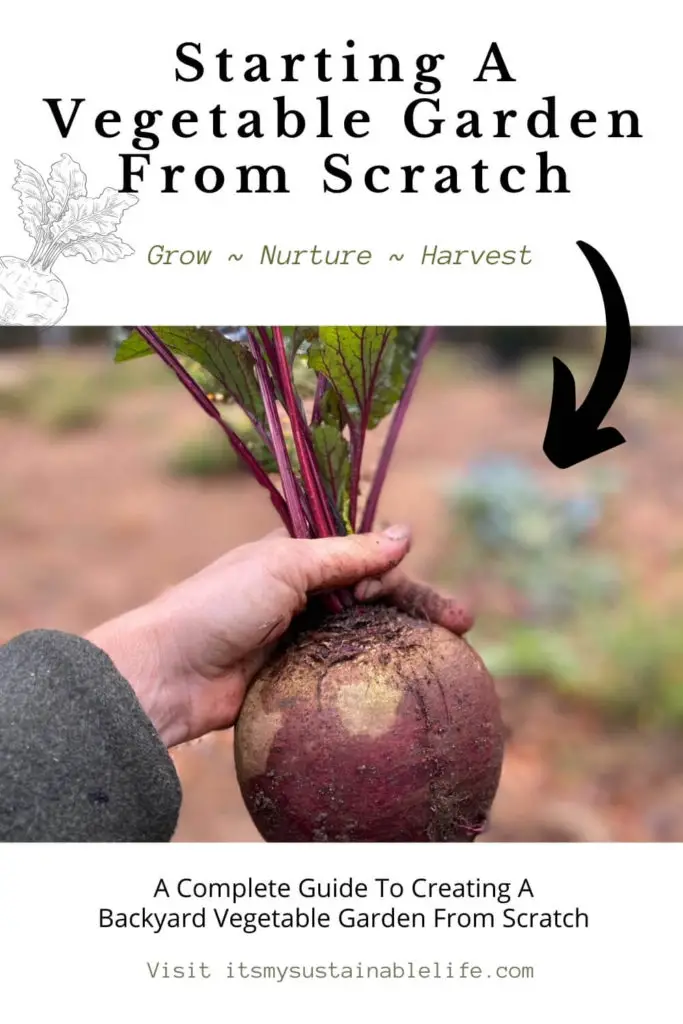
Rabbits on the other hand dig down. Sometimes fairly deep. To deter these silly rabbits, any small wired fencing you use should be buried a foot or more outward from the bottom of the fence and attached to the above ground fencing. The fence itself should still be fairly high. Using small enough mesh fencing that a rabbit could fit through the openings.
Honestly, at times when these critters want in, they get in. The only fail safe way we have used is an electrical fencing system. Since using this method of animal control we have had no issue with unwanted guests visiting the veggie patch, berry patch, or beehives.
When it comes to controling pests organically, nothing beats handpicking. Catching them early, destroying any eggs you find along the way has been the most effective way of pest control in our organic garden. Our chickens are very happy to receive the fruits of my labor as well. No chickens? Drop any you find munching away in a glass of soapy water and say bye bye.
GENERAL MAINTENANCE TIPS FOR YOUR VEGETABLE GARDEN
Want to make sure that your veggie plants keep on giving throughout the growing season? Harvest them! Some plants need to be harvested often in order to promote further production.
During the height of the growing season, I harvest daily my tomatoes, beans, and zucchini to encourage the plants to produce more. This is the fun time! Reaping the “fruits of your labor”!
Have a regular watering schedule in place and stick to it. By having a soaker hose system on a daily timer helps with this, as sometimes life does get away from us!
Have a set schedule for fertilizing your vegetable garden. Every 3 to 4 weeks plan on offering at a minimum a complete fertilizer with twice as much phosphorus as nitrogen or potassium. Something like a 10-20-10 is easy to find and use, or give the garden a good dose of the liquid kelp as discussed earlier.
Want to encourage FREE FOOD for next years garden? At the end of the growing season, tidy up, but not overly so. Leave some seed pods and heads in the garden to promote self-seeding. A bit of permaculture to your garden.
As a no til gardener, I always leave my calendula, dill, cilantro, a few onion and leek, and am always blessed with new plants come spring. I have not planted many of those listed by seed for many years. Let nature take care of itself, and it will take care of you 😉
Be ready for the onslaught of possible pests and diseases. These issue’s are natural and a good indication that you are part of a healthy eco-system.
To aid in keeping these issue’s somewhat at bay, consider doing general on-going maintenance of your garden space.
- WEED – I know, the dreaded task no gardener looks forward to; weeding. However, weeding the garden is important as they will compete with the vegetables for it’s very vital needs; nutrients, light, and water. Help ease the pain of weeding by mulching, utilizing companion plantings (more on that topic soon!), or in a pinch utilize plastic sheeting made for gardens. Any strays that may pop up, plan on hand weeding or using your favorite garden tool for the job
- WILDLIFE CONTROL – It doesn’t matter where you live, city, urban, or rural, when you have a feast available there will be some kind of wildlife that looks at that and does a little happy dance 😅. In my neck of the woods, deer, rabbits, and the like can decimate an entire garden if allowed. Fencing works, but, again, plan on a fence that is at least 8 feet tall and extends beneath the soil at least 6 inches to keep these two out
- PESTS – When it comes to pests, I encourage handpicking only and dropping them into a glass of water. The environment will love you and should you keep chickens, they will love you as well. For larger issues, there are natural remedies available that are safe and effective. Should you go the chemical route, always be sure to follow the manufacturers’ directions completely
- DISEASE – The best way to fight disease in the garden is to prevent it from happening in the first place. Many fungal diseases issues are preventable by watering near soil level (remember that soaking hose recommendation?). Should a plant succumb to a disease, promptly remove it and throw in the trash, NOT to your compost pile. Additionally, you can choose cultivar’s or varieties of vegetables that are listed as disease-resistant, and rotate your planting location year-to-year of crops to help encourage healthy soil
Right from the start, keep a gardening journal. You may think that your garden is small and you will remember next year what you planted where, but I guarantee you won’t. I speak from experience here.
Keep a yearly garden journal listing where you planted certain plants, the layout, how many plants, what you harvested, and any other notes on fertilizing, watering, the weather, & any changes you want to make for the upcoming year. You will be happy you did.
I have taken the guess work out of garden journaling & tracking for you by creating a 24 page, plus cover page, Garden Management Planner. These planner pages have all the printable pages you will need to keep track of any garden you start right from the beginning.
Grab your copy, you can print them over year-to-year as needed, and create your garden management binder to plan, track, and manage every aspect of your gardening adventures. You will be glad you did.
Did I mention how pretty they are too 😉
It may seem overwhelming when you are first starting a vegetable garden from scratch. Hopefully, by following this vegetable gardening guide, it will have you elbows deep in soil and enjoying your harvest in no time.
Looking to preserve your harvest? Be sure to grab your FREE eBook, “Canning A Beginner’s Guide” by scrolling right and subscribing!
Are you creating a vegetable garden from scratch this year?

Enjoy this article? Please consider sharing it on your favorite social media channel! Want more? Subscribe below for the occasional update with all the “happenings on the hill”!
HAVE YOU SEEN THE LATEST?
- How To Sanitize Seed Trays
- How Often To Water Tomato Plants
- Winter Sowing In Milk Jugs
- How To Appliqué
- What Food Group Are Eggs In

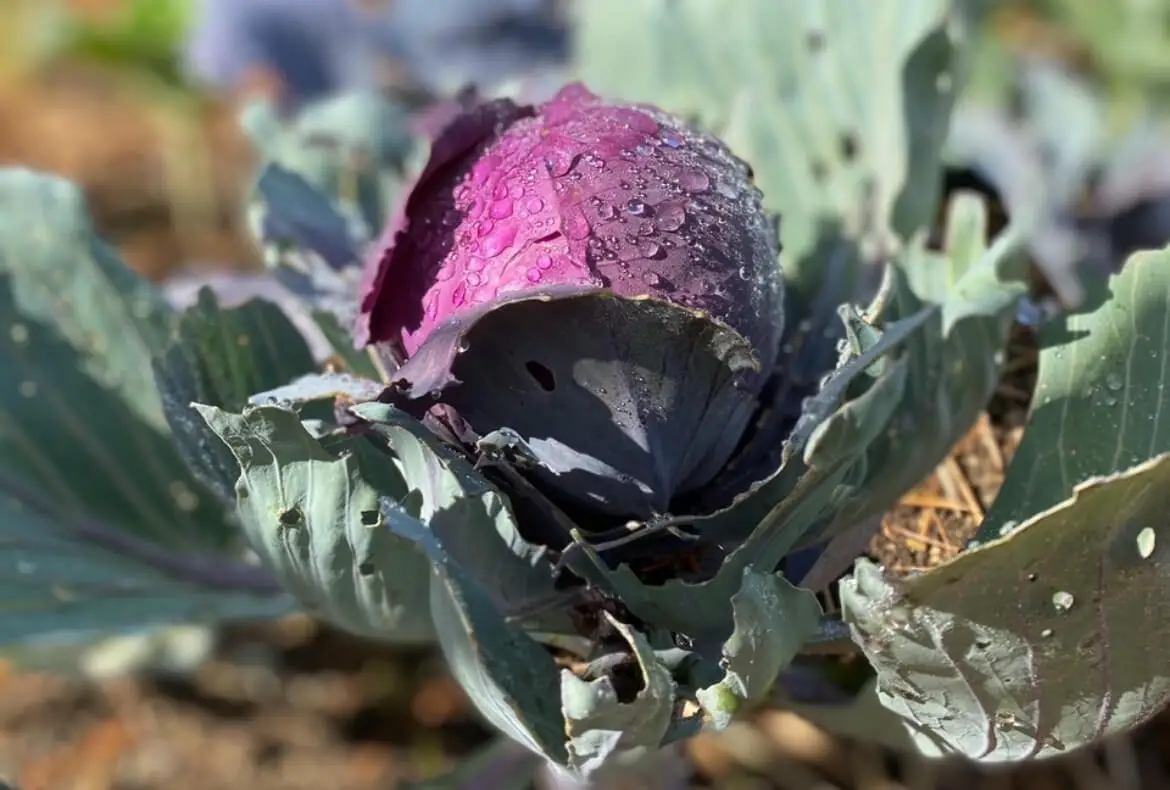

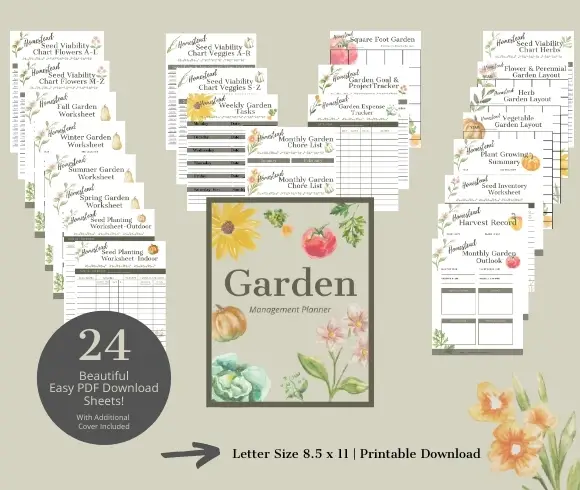
54 comments
Though I’ve had a veg garden for many years… there are still so many things to learn! Thanks for such a comprehensive list of tips.
I can see how it would be very rewarding having a vegetable garden! We get to enjoy fresh veggies from our neighbors’ garden, and would love to eventually start our own!
I would love to start a garden but for the deer. Thanks for addressing this and the pests. These are the man culprits that destroys our flowers every years. This year we educated ourself on how to effectively control both. Now to tackle a garden. Great post.
I love the idea of a garden! Watching the plants grow is amazing to me! I always start strong with the planting part, but as summer gets busy… the weeding gets away from me and then all is lost! I may try again someday once my life is less hectic and foraging in the garden for dinner becomes more important to my time constraints! I’m not sure how my Mother did it. We always had a huge immaculate garden when I was a kid.
I ordered seeds a few weeks ago and just pulled them out, wondering where do I even begin! Your post is certainly going to help – now to plan a bit! I’m excited and hopeful to be successful!
Hi Tiffany~
So exciting! You may want to check out how to Create A Seed Starting Schedule to help you get started.
Happy Planning & Planting!
Such good info! I really want to start a vegetable garden this year. You have great advice!
I definitely eat more vegetables when I have a garden.
This is incredibly resourceful! I recently fell in love with gardening this past summer (my father loves to garden and grows his own vegetables). When I buy a house, I will definitely be coming back to this post! Thank you for sharing
I love gardening too. I love your tips and organization! Thanks for sharing!
Excellent tips! I have a tiny veggie garden and a huge flower and herb garden. I enjoy it all.
It really is lovely to be able to grow your own vegetables. Although I haven’t had a vegetable garden for a couple of years, recent events have made me think I’d like to start one again. This comprehensive and helpful post is very timely, Suzan and is a wonderful guide to getting my new endeavours off to a good start! I know many other people will find it helpful too. Thank you for sharing and for being a part of the Hearth and Soul Link Party Community. I’m featuring this post at the party this week. Hope to ‘see’ you there! Take care, stay well, and I wish you a wonderful week!
My daughters have been hounding me to start a veggie garden every year – hoping 2021 is it! Great tips!
Great info. Love gardening!
Great post! I have been gardening for 4 years but I still have a lot to learn! I have not been successful with tomatoes yet but I keep trying!
We all are always learning for sure! I would love for you to consider joining my FB gardening group, Organically Rooted Garden Group. It’s shaping up to be a fine group of gardeners with all levels of experience. Hope to see you there!
Hello, this is one of my favorites for Encouraging Hearts and Home, this week! I hope you stop by and say hello, this post has been pinned! Thank you for being a part of Encouraging Hearts and Home, we appreciate all that you share. Have a great week ahead!
Deer – Ugh – a real issue this year along with a resident woodchuck! First time I’ve ever had to fence my garden with something taller than 2″ chicken wire.
This was an amazing and extremely beneficial article! We got a community garden plot 2 years ago and it was a disaster. And then last year I did much better. So much to learn still – learned a lot from this post.
Excellent post as always! Your Etsy shop looks amazing! So many great handmade products! Thank you for linking up with us at Embracing Home and Family!
Thank you, Jenn!
This is great Suzan! I have the location for my garden already picked out (faces South and gets full sun exposure), and know I want zucchini and tomatoes (tomatoes have done really well for me in the past). I think the kids would enjoy growing carrots. I’m just not sure how to lay it all out as I’d like to tie it into my sprinklers so I don’t have to hand water it all. I’m also planning on doing raised beds as I live near one of the worst nuclear disasters in U.S. history (Santa Susana Field Lab) and am not sure I want to plan in the ground. Several of my friends have had their soil tested, so I may do that, too. Thanks for all the tips. I’ll be referring to this as I get closer to “breaking ground!”
Sounds like you have a plan! So happy you found this useful. You may also be interested in our gardening group, a great resource for information from those who’ve all levels of experience. You can find it at Organically Rooted Garden Group on FB. Thanks so much for reading!
Thanks Suzan I’ll have to check out the Facebook group more often. That initial step of getting started is sometimes the most intimidating!
This took me back to the days in my childhood where we grow most of what we ate. My mom was such a farmer, I always marveled and awed when tiny seeds grew food.
It is a miracle, isn’t it?
I wish we had the space for a larger veggie garden in this house! In our old house, we started one from scratch and did pretty well. Most years we ended up feeding the neighbourhood because it was too much just for our small family! And it was definitely rewarding!
Great info! You always write so lovely. You give me the confidence that I might actually be able to grow something. I am growing a lemon on my lemon tree though… I’m scared my kids are going to knock it off! I shared your post to Facebook and pinned it for later too. Thank you for the great read!
Thank you for your kind words, Erica! I’m so pleased you are enjoying the content. If you can grow a lemon, you can definitely grow something! Thanks for reading!
Great gardening advice for beginners and seasoned gardeners! I definitely planted way too many turnips this year for our family and found that I’m the only one that truly enjoys them. haha Next year I will definitely adjust!
This made me chuckle. I’ve had the same experience with growing kohlrabi 🙂
I really wanted to start a vegetable garden over the summer last year, but life happened. Maybe this year!
Hope you can, Shelby!
Oh my goodness, great read. I had such a fabulous garden in my little yard in Albuquerque, that we moved to a 7 acre farm in the countryside when my kids were teeny.
Such an adventure. And completely overwhelming! New Mexico’s soil is awful, but over the years, I managed to become certified organic, and had a CSA, and supplied broccoli rabe to the organic coop.
It’s a hard life, but yes, very satisfying. I tip my hat to you!
And – your Etsy shop is great!!
Love this, Suz! What a wealth of knowledge you must have. Thank you for visiting the Esty shop! Hope you find something intriguing 🙂
We are veggie gardeners ourselves, but there were some great tips I took heed of in this post, namely to keep a gardening journal. Thank you!
Reading this makes me anxious to start my garden! One of my favorite hobbies outside of travel! Such good info!!
Each year I would plant a great garden that was well thought out. Then the weed came…my weeders abandoned ship (myself included). The garden would fail because we were too busy to tend it properly. I dream of a beautiful well organized garden that weeds itself!
LOL, let me know when you find it! Hopefully the mulching tips will be of use.
I never thought about planting the taller plants north vs south! Good to know for this year!!!
What a wonderfully comprehensive guide to gardening. I can’t wait until I can have a garden again.
Very interesting. I always admire people who can successfully grow their own garden. I never had a green thumb but i might give it a try next this spring.
Great advice! Gardening is an art!
I want to do this so badly! Although I have a terrible green thumb, haha. But my goal one day is to actually live similarly to you and build a “container home compound” and be almost completely off the grid & self-sustainable. So many great tips. Definitely gonna bookmark this.
What a wonderful goal to have! I truly hope you can incorporate some of these tips even now. You may be interested in joining our FB group, “Organically Rooted Garden Group”. There is already lots of knowledge there as well!
This makes me want to start a garden, again. I miss having my veggies growing.
Great tips! I need to start planning my garden, and will keep in mind to keep it small since I’m a beginner!!
This was amazing for someone like me thinking of starting a garden. You touch upon everything including my concerns about deer. They are relentless. Thanks so much for sharing.
Last year was my first year starting most of my plants from seeds. It was a lot but worth it. I learned to start way earlier. January is my planning month, can wait to start planting in February. Makes me feel like we’re that much closer to summer!
It’s a perfect time to start planning that garden for spring! Great tips and advice to help having a successful gardening season!
We love to grow vegetables and do have a garden but the growing season here in the north woods is only about three months long.
You would definitely need to be creative with that short season! Thank you for reading!!
We are months away from garden season, but thanks for the breath of hope and spring.
Exactly! Now is the time to start the planning stages of creating a vegetable garden. Thanks so much for stopping by Michele!